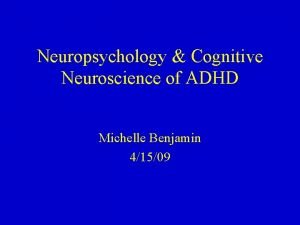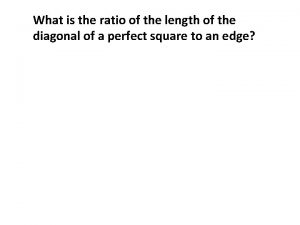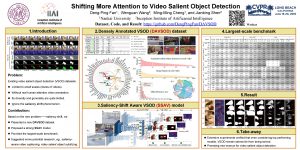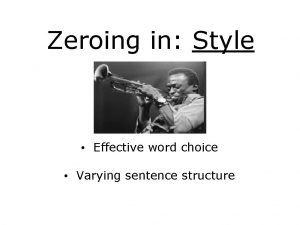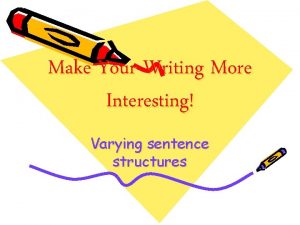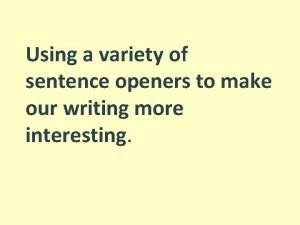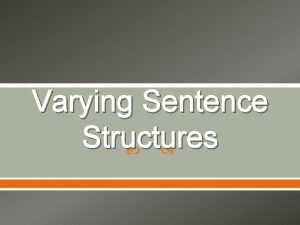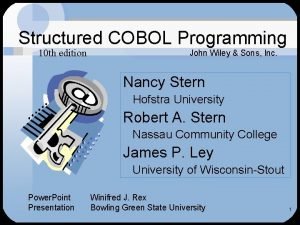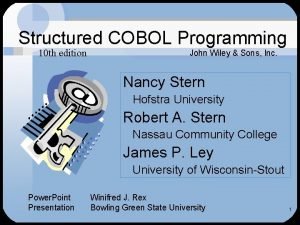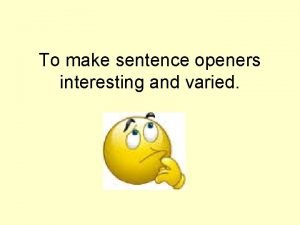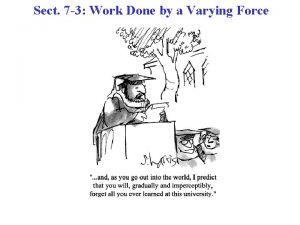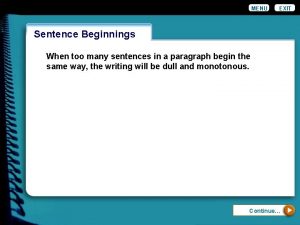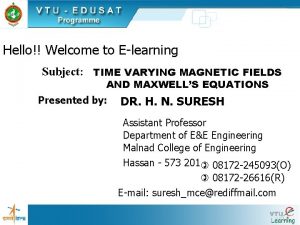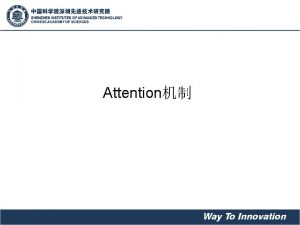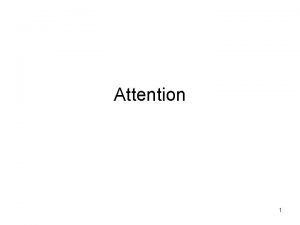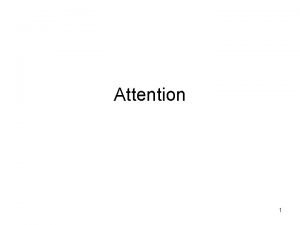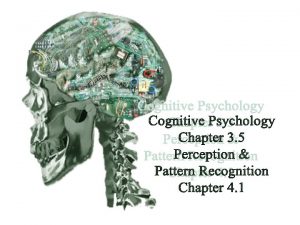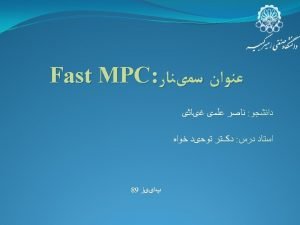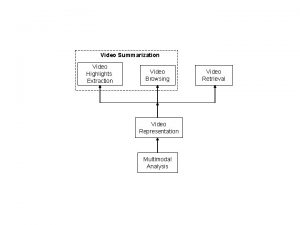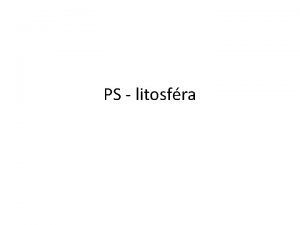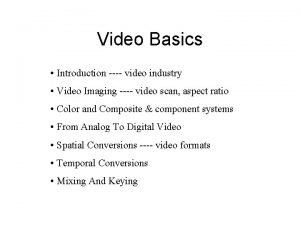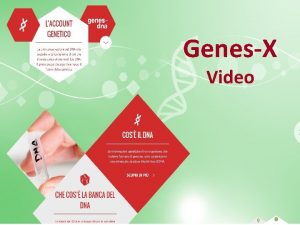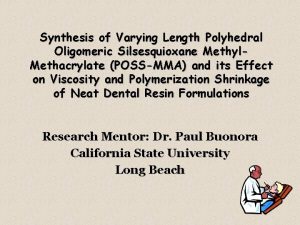Influence of varying video length conditions on attention

















- Slides: 17

Influence of varying video length conditions on attention span Alan Rodriguez Tiburcio, Senior year undergraduate Portland State University College of Liberal Arts and Sciences Student Research Symposium

Outline ● ● ● Leading questions Theoretical framework Dependent variable (DV) Measures Experimental procedure Data analysis & interpretations (simulated data) Design improvements

Leading Questions How do the varying forms of video content influence our attention span? Does the viewing of shorter video content influence our attention in a manner significantly different from longer content?

Model of Attention Task-specific and Spatial-scale Control, TASC (Wilder et al. , 2019) ● Shared mechanism between exogenous & endogenous ○ Dependent on two dimensions: task specificity and spatial scale e. g. , search for a specific object Experimental focus: Featured-based endogenous attention ● Voluntary, searching ● d 2 Test of Attention e. g. , exploration in absence of specified goal Exogenous attention ● Reflexive, unspecified goal ● Posner Paradigm

DV: Operationalizing Endogenous Attention d 2 Test of Attention (Sinha et al. , 2018) ● A cancellation test ○ ○ Similar stimuli presented at the same time 14 back-to-back trials (a) Eliminate every target character “d” + two dashes either above or below (b) Ignore non-target characters Participants scored based on error rate as a percentage Example:

DV: Operationalizing Exogenous Attention Posner Paradigm (Posner, 1980; Hayward & Ristic, 2013) ● Spatial cueing assessment ○ ● Evaluates participant’s ability to shift attention Computer-based ○ Response is pressing left or right key 1. Participants focus on fixation point 2. Attention cue 1. Random 2. Followed by time delay (cue-target interval) 3. “X” appears in either box, 300 -500 ms later 1. Cued box (valid), uncued box (invalid) 2. Remains until response or 1500 ms 3. Completing one trial (total of 100) Participants scored by average reaction time (RT) Both valid and invalid RT

IV: Video length conditions (VLC) Environment: 30 minutes, constant video watching simulating social network site (SNS) usage Brief: shortest, Tik. Tok simulation ● less than 30 seconds ● five to ten minutes ● thirty minutes Intermedial: mid-length, Twitter/Reddit simulation Protracted: longest, You. Tube/streaming simulation Hypothesis: being in a shorter VLC will positively relate to reduced attention in our measures, (higher RT, d 2 Error rate)

Between-subject design Pretest Scoring Exogenous (reflexive) attention ● Posner Reaction Time MANCOVA Independent Variable Video Length Condition (VLC) Brief (n=29) 30 seconds Dependent Variables Exogenous (reflexive) attention ● Posner Reaction Time Intermedial (n=30) 5 -10 minutes Endogenous (voluntary) attention ● d 2 Error Rate Protracted (n=33) 30 minutes IV did not significantly relate to pretest ● Ponser, F(2, 89) = 1. 132, p =. 327 ● D 2, F(2, 89) = 0. 309, p =. 735 IV influenced attention Pretest and posttest scores significantly different ● Exogenous attention, t(91) = -11. 94, p <. 001 ● Endogenous attention, t(91) = -11. 93, p <. 001 Endogenous (voluntary) attention ● d 2 Error Rate Data simulated for the purposes of the presentation.

MANCOVA: Testing Assumption Independent Random Sampling : Yes Categorical IV and Continuous DV: Absence of multicollinearity: Multivariate normality: Homogeneity of Variance: Yes (Pearson’s R =. 37) Yes (Shapiro-Wilk test, ps>. 05) Yes (Levene’s test, Fs<1, ps>. 05)

MANCOVA: Results Significant influence based on VLC, account for covariates Using Wilke’s Lambda test F(4, 172) = 44. 005, p<. 001 reject null hypothesis Multivariate Tests: VLC Df Test Stat F value num Df Den Df Pr(>F) Pillai 2 0. 7829 28. 625 4 174 <. 001 Wilke’s 2 0. 2499 44. 005 4 172 <. 001 Hotelling-Lawley 2 2. 8689 62. 399 4 170 <. 001 Roy 2 2. 2822 125. 595 2 87 <. 001

Univariate ANCOVAs VLC on endogenous attention, F(2, 88) = 227. 72, p <. 001 Response d 2 Error Rate (%) Df Sum of Squares F value Pr(>F) (Intercept) 1 24. 490 251. 66 <. 001 d 2 Covariate 1 51. 560 103. 03 <. 001 VLC 2 11. 620 227. 72 <. 001 88 9. 962 Df Sum of Squares F value Pr(>F) (Intercept) 1 18572 194. 58 <. 001 Posner Covariate 1 308936 3236. 64 <. 001 VLC 2 140857 737. 86 <. 001 88 8400 Residuals Response VLC on exogenous attention, F(2, 88) =737. 86, p <. 001 Residuals Posner Reaction Time

Post-hoc Tukey HSD Adjusted means to account for covariate All conditions were statistically significant d 2 Error Rate Estimate SE t value p Intermedial-Brief -0. 738 0. 0878 -8. 409 <. 001 Protracted-Brief -1. 810 0. 086 -21. 134 <. 001 0. 0852 -12. 594 <. 001 Estimate SE t value p Intermedial-Brief -54. 957 2. 554 -21. 52 <. 001 Protracted-Brief -95. 581 2. 492 -38. 35 <. 001 Protracted-Intermediate -40. 624 2. 496 -16. 28 <. 001 Protracted-Intermediate -1. 072 Posner Paradigm RT

Discussion After thirty minutes of video consumption: Relative to the protracted condition ● Brief and intermedial videos reduced exogenous and endogenous attention Relative to intermediate condition ● Brief videos reduced exogenous and endogenous attention Being in a shorter VLC positively related to more decreased attention as measured by higher scores (error rate + RT)

Design Improvements VLC as continuous variable Specialized content Measurement Output

References Barton, B. A. , Adams, K. S. , Browne, B. L. , & Arrastia-Chisholm, M. C. . (2021). The effects of social media usage on attention, motivation, and academic performance. Active Learning in Higher Education, 22(1), 11– 22. https: //doi. org/10. 1177/1469787418782817 Bates, M. E. , & Lemay, E. P. . (2004). The d 2 Test of Attention: Construct validity and extensions in scoring techniques. Journal of the International Neuropsychological Society , 10(03). https: //doi. org/10. 1017/s 135561770410307 x Brickenkamp, R. , & Zillmer, E. (1998) The d 2 Test of Attention. Hogrefe and Huber. https: //doi. org/10. 1037/t 03299 -000 Cao, X. , Guo, X. , Vogel, D. , & Zhang, X. . (2016). Exploring the influence of social media on employee work performance. Internet Research, 26(2), 529– 545. https: //doi. org/10. 1108/intr-11 -2014 -0299 Field, A. , Miles, J. , & Field, Z. (2012). Discovering Statistics Using R (pp. 696 -748). SAGE Publications Ltd. Firth, J. , Torous, J. , Stubbs, B. , Firth, J. A. , Steiner, G. Z. , Smith, L. , Alvarez ‐Jimenez, M. , Gleeson, J. , Vancampfort, D. , Armitage, C. J. , & Sarris, J. . (2019). The “online brain”: how the Internet may be changing our cognition. World Psychiatry, 18(2), 119– 129. https: //doi. org/10. 1002/wps. 20617 Gabay, S. , & Henik, A. . (2008). The effects of expectancy on inhibition of return. Cognition, 106(3), 1478– 1486. https: //doi. org/10. 1016/j. cognition. 2007. 05. 007 Hayward, D. A. , & Ristic, J. . (2013). Measuring attention using the Posner cuing paradigm: the role of across and within trial target probabilities. Frontiers in Human Neuroscience, 7. https: //doi. org/10. 3389/fnhum. 2013. 00205 Hedge, C. , Powell, G. , & Sumner, P. . (2018). The reliability paradox: Why robust cognitive tasks do not produce reliable individual differences. Behavior Research Methods, 50(3), 1166– 1186. https: //doi. org/10. 3758/s 13428 -017 -0935 -1 Iqbal, M. (2021, March 4). Tik. Tok Revenue and Usage Satistics (2021). Business of Apps. https: //www. businessofapps. com/data/tik-tok-statistics/ Iqbal, M. (2020, November 17). You. Tube Revenue Usage Statistics (2020). Business of Apps. https: //www. businessofapps. com/data/youtube-statistics/ Kirschner, P. A. , & Karpinski, A. C. . (2010). Facebook® and academic performance. Computers in Human Behavior, 26(6), 1237– 1245. https: //doi. org/10. 1016/j. chb. 2010. 03. 024 Lau, W. W. F. . (2017). Effects of social media usage and social media multitasking on the academic performance of university students. Computers in Human Behavior, 68, 286– 291. https: //doi. org/10. 1016/j. chb. 2016. 11. 043 Lubbe, R. H. J. V. D. , Vogel, R. O. , & Postma, A. . (2005). Different Effects of Exogenous Cues in a Visual Detection and Discrimination Task: Delayed Attention Withdrawal and/or Speeded Motor Inhibition? . Journal of Cognitive Neuroscience, 17(12), 1829– 1840. https: //doi. org/10. 1162/089892905775008634 Meyers, L. S. , Gamst, G. , & Guarino, A. (2016). Ophir, E. , Nass, C. , & Wagner, A. D. . (2009). Cognitive control in media multitaskers. Proceedings of the National Academy of Sciences , 106(37), 15583– 15587. https: //doi. org/10. 1073/pnas. 0903620106

Peelen, M. V. , Heslenfeld, D. J. , & Theeuwes, J. . (2004). Endogenous and exogenous attention shifts are mediated by the same large-scale neural network. Neuroimage, 22(2), 822– 830. https: //doi. org/10. 1016/j. neuroimage. 2004. 01. 044 Perrin, A. , & Anderson, M. (2019, April 10). Share of U. S. adults using social media, including Facebook, is mostly unchanged since 2018. Pew Research Center. https: //www. pewresearch. org/fact-tank/2019/04/10/share-of-u-s-adults-using-social-media-including-facebook-is-mostly-unchanged-since-2018/ Posner, M. I. . (1980). Orienting of Attention. Quarterly Journal of Experimental Psychology , 32(1), 3– 25. https: //doi. org/10. 1080/00335558008248231 Ravizza, S. M. , Hambrick, D. Z. , & Fenn, K. M. . (2014). Non-academic internet use in the classroom is negatively related to classroom learning regardless of intellectual ability. Computers & Education, 78, 109– 114. https: //doi. org/10. 1016/j. compedu. 2014. 05. 007 Roberts, J. , Yaya, L. , & Manolis, C. . (2014). The invisible addiction: Cell-phone activities and addiction among male and female college students. Journal of Behavioral Addictions, 3(4), 254– 265. https: //doi. org/10. 1556/jba. 3. 2014. 015 Sender, A. and Korzynski, P. (2019), How peers’ updates on social media influence job search. Journal of Managerial Psychology, 35(1), 1 -12. https: //doi. org/10. 1108/JMP-10 -2018 -0467 Sherman, L. E. , Payton, A. A. , Hernandez, L. M. , Greenfield, P. M. , & Dapretto, M. . (2016). The Power of the Like in Adolescence. Psychological Science, 27(7), 1027– 1035. https: //doi. org/10. 1177/0956797616645673 Sinha, P. , Bowers, D. , & Woods, A. J. . (2018). D 2 Test of Attention (pp. 1039– 1043). https: //doi. org/10. 1007/978 -3 -319 -57111 -9_9087 Tankovska, H. (2021, 26 Jan. ) Average You. Tube video length 2018, by category. Statista. https: //www. statista. com/statistics/1026923/youtube-video-category-average-length/ Tipper, C. , & Kingstone, A. . (2005). Is inhibition of return a reflexive effect? . Cognition, 97(3), B 55–B 62. https: //doi. org/10. 1016/j. cognition. 2005. 02. 003 Vraga, E. K. , Bode, L. , Smithson, A. -B. , & Troller-Renfree, S. . (2019). Accidentally Attentive: Comparing visual, close-ended, and open-ended measures of attention on social media. Computers in Human Behavior, 99, 235– 244. https: //doi. org/10. 1016/j. chb. 2019. 05. 017 Vraga, E. , Bode, L. , & Troller-Renfree, S. . (2016). Beyond Self-Reports: Using Eye Tracking to Measure Topic and Style Differences in Attention to Social Media Content. Communication Methods and Measures, 10(2 -3), 149– 164. https: //doi. org/10. 1080/19312458. 2016. 1150443 Wilder, M. H. , Mozer, M. C. , & Wickens, C. D. (2009) A Unified Theory of Attentional Control. Research Gate. https: //www. researchgate. net/publication/242484353_A_Unied_Theory_of_Attentional_Control Yoo, W. , Yang, J. , & Cho, E. . (2016). How social media influence college students’ smoking attitudes and intentions. Computers in Human Behavior, 64, 173– 182. https: //doi. org/10. 1016/j. chb. 2016. 061

Thank You!
 Michelle benjamin phd
Michelle benjamin phd What is the ratio of the length of to the length of ?
What is the ratio of the length of to the length of ? Shifting more attention to video salient object detection
Shifting more attention to video salient object detection Varying sentence beginnings
Varying sentence beginnings Varying sentence structure
Varying sentence structure Thud sentence
Thud sentence Varying sentence structures
Varying sentence structures Time varying fields and maxwell's equations
Time varying fields and maxwell's equations Cobol perform varying decrement
Cobol perform varying decrement Structured cobol programming
Structured cobol programming Sentence openers
Sentence openers Work done by a varying force
Work done by a varying force Exit sentence
Exit sentence Equation of continuity for time varying fields
Equation of continuity for time varying fields Video.search.yahoo.com search video
Video.search.yahoo.com search video Yahoo.com.yw
Yahoo.com.yw Digital media primer
Digital media primer Video yandex
Video yandex
